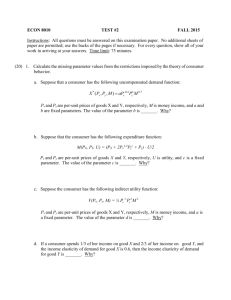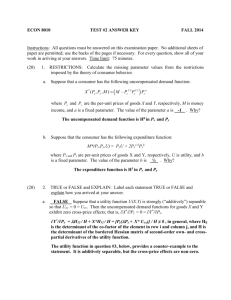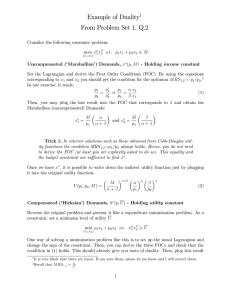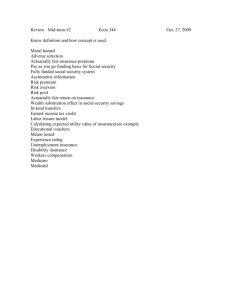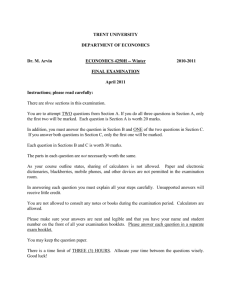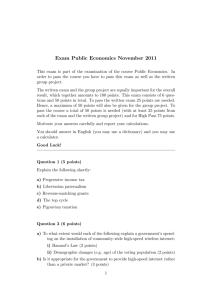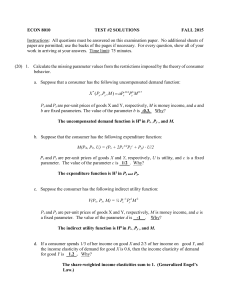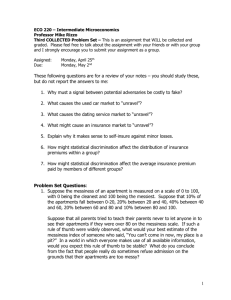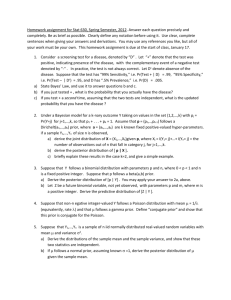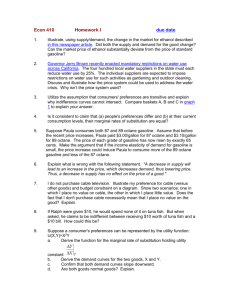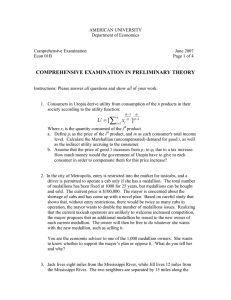ECON 8010 TEST #2 FALL 2014 Instructions: All questions must be
advertisement
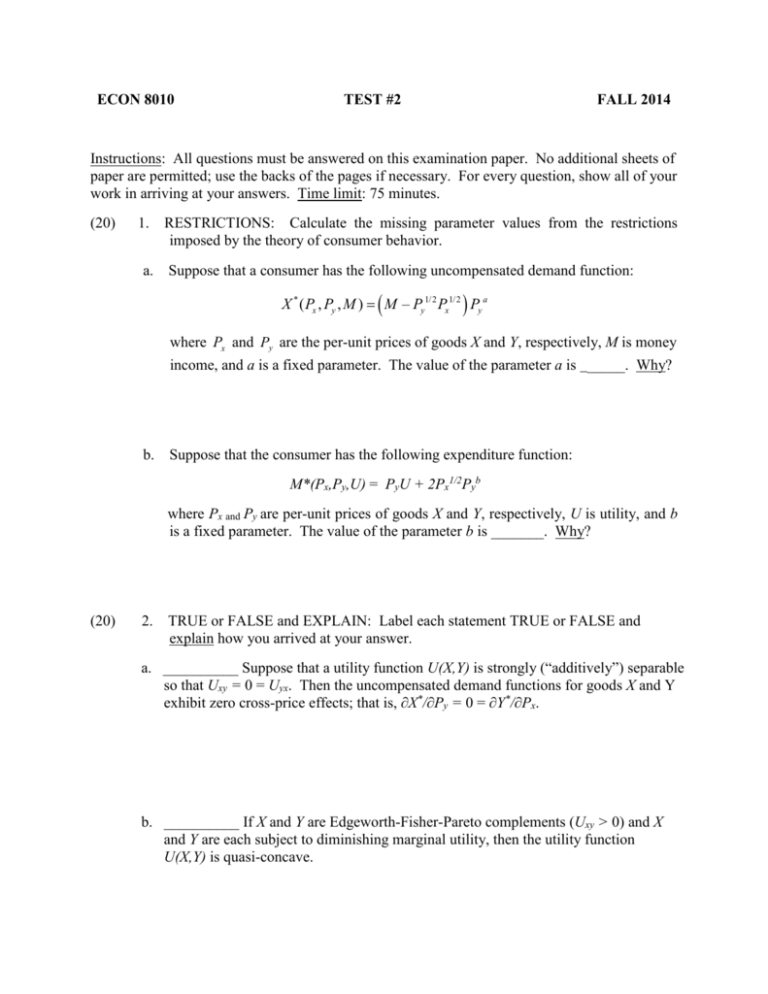
ECON 8010 TEST #2 FALL 2014 Instructions: All questions must be answered on this examination paper. No additional sheets of paper are permitted; use the backs of the pages if necessary. For every question, show all of your work in arriving at your answers. Time limit: 75 minutes. (20) 1. a. RESTRICTIONS: Calculate the missing parameter values from the restrictions imposed by the theory of consumer behavior. Suppose that a consumer has the following uncompensated demand function: X * ( Px , Py , M ) M – Py1/2 Px1/2 Py a where Px and Py are the per-unit prices of goods X and Y, respectively, M is money income, and a is a fixed parameter. The value of the parameter a is _____. Why? b. Suppose that the consumer has the following expenditure function: M*(Px,Py,U) = PyU + 2Px1/2Pyb where Px and Py are per-unit prices of goods X and Y, respectively, U is utility, and b is a fixed parameter. The value of the parameter b is _______. Why? (20) 2. TRUE or FALSE and EXPLAIN: Label each statement TRUE or FALSE and explain how you arrived at your answer. a. __________ Suppose that a utility function U(X,Y) is strongly (“additively”) separable so that Uxy = 0 = Uyx. Then the uncompensated demand functions for goods X and Y exhibit zero cross-price effects; that is, ∂X*/∂Py = 0 = ∂Y*/∂Px. b. __________ If X and Y are Edgeworth-Fisher-Pareto complements (Uxy > 0) and X and Y are each subject to diminishing marginal utility, then the utility function U(X,Y) is quasi-concave. (25) 3. Suppose that an individual maximizes the utility function U(X,Y) = X1/2 + Y subject to the budget constraint M = Px X + Py Y. a. Derive the uncompensated demand functions for X and Y. b. Use your answers in part (a) to derive the indirect utility function. (10) 4. Suppose that an individual’s preferences, defined over the two goods X and Y, are homothetic, so that the ratio of uncompensated demands for the two goods is a function only of the price ratio Px/Py and is therefore independent of money income M. Show that the income elasticities of demand for X and for Y are both equal to 1. (20) 5. Suppose that a consumer’s preferences are represented by the expenditure function, M*(Px, Py, U) = Py [1 + U + loge(Px/Py)], where Px and Py are the per-unit prices of X and Y, respectively, and U is utility. Derive the compensated demand functions for X and Y. (5) 6. TRUE or FALSE and EXPLAIN: Label the statement TRUE or FALSE and explain how you arrived at your answer. “In a model with three goods (X, Y, and Z), if Y and Z are net complements then X and Z are net substitutes.”
